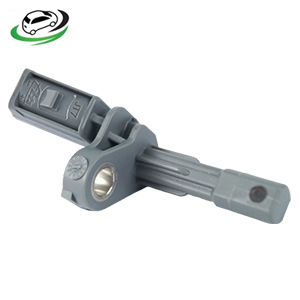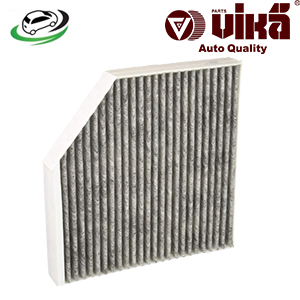-10%
Get Charcoal Lined Cabin Filter / Fresh Air Filter Audi A7-3.0/TDI / Audi C7 A6 2.0T / C7 S6 4.0T / C7 S7 4.0T/ RS7 4.0T/D4 A8 3.0 TDI 4H0819439
A charcoal-lined cabin filter, also known as an activated carbon cabin air filter, is a specialized component designed to improve the air quality inside a vehicle. It serves as a barrier between the outside environment and the interior of the car, filtering out various contaminants and odors before they can enter the cabin. This type of filter is especially effective in removing harmful gases, unpleasant smells, and airborne particles, making the driving experience more comfortable and healthier for the occupants. In this detailed explanation, we’ll explore what a charcoal-lined cabin filter is, how it works, its benefits, common issues, and maintenance tips.
What is a Charcoal-Lined Cabin Filter?
A charcoal-lined cabin filter is an advanced type of cabin air filter that includes a layer of activated carbon (charcoal) in addition to the standard filter media. While a standard cabin filter primarily removes dust, pollen, and other particulate matter, the activated carbon layer adds an additional level of filtration by adsorbing (not absorbing) gases, odors, and volatile organic compounds (VOCs).
Activated carbon is a form of carbon that has been processed to have a large surface area, making it highly effective at trapping and neutralizing gases and odors. This characteristic is what makes charcoal-lined cabin filters superior to standard filters in terms of air quality improvement.
How Does a Charcoal-Lined Cabin Filter Work?
The operation of a charcoal-lined cabin filter involves two main stages of filtration: particulate filtration and gas/odor adsorption.
- Particulate Filtration:
- Filter Media: The first layer of the filter is similar to a standard cabin air filter. It is made of pleated paper or synthetic fibers designed to trap solid particles such as dust, pollen, mold spores, and other airborne contaminants. As air passes through this layer, these particles are captured, preventing them from entering the vehicle’s interior.
- Efficiency: The efficiency of particulate filtration is usually measured by the filter’s ability to capture particles of varying sizes. Most charcoal-lined cabin filters can capture particles as small as a few microns, ensuring that even fine dust and allergens are removed from the air.
- Gas and Odor Adsorption:
- Activated Carbon Layer: The second stage of filtration involves the activated carbon layer. As air flows through this layer, harmful gases and odors are adsorbed onto the surface of the activated carbon. This process involves the gas molecules adhering to the surface of the carbon particles, effectively removing them from the air stream.
- Targeted Contaminants: The activated carbon layer is particularly effective at removing a wide range of gases and odors, including:
- Volatile Organic Compounds (VOCs): These are harmful chemicals that can be released from various sources, including vehicle exhaust, industrial emissions, and household products.
- Nitrogen Dioxide (NO2) and Sulfur Dioxide (SO2): These are common pollutants found in vehicle emissions and industrial smog, both of which can have adverse health effects.
- Ozone (O3): A reactive gas that can cause respiratory problems and is commonly found in urban environments.
- Odors: The charcoal layer can also remove unpleasant smells from outside the vehicle, such as those from exhaust fumes, industrial areas, and agricultural operations.
Benefits of a Charcoal-Lined Cabin Filter
The use of a charcoal-lined cabin filter offers several significant benefits that enhance the driving experience and contribute to the health and comfort of the vehicle’s occupants:
- Improved Air Quality:
- Cleaner Air: By filtering out both particulate matter and harmful gases, a charcoal-lined cabin filter ensures that the air inside the vehicle is significantly cleaner than the air outside. This is particularly beneficial in urban areas with high levels of pollution.
- Allergen Reduction: The filter effectively captures allergens such as pollen and mold spores, reducing the risk of allergic reactions for sensitive individuals.
- Odor Elimination:
- Fresh Cabin Environment: The activated carbon layer neutralizes unpleasant odors from outside the vehicle, such as those from exhaust fumes, roadkill, or industrial sites. This creates a more pleasant and comfortable environment inside the cabin.
- Protection Against Harmful Gases:
- Healthier Breathing: By removing harmful gases like VOCs, NO2, SO2, and ozone, the filter helps protect the occupants from respiratory issues and other health problems associated with air pollution. This is especially important for children, the elderly, and individuals with pre-existing respiratory conditions.
- Enhanced Driving Comfort:
- Less Fatigue: Breathing cleaner air can reduce driver fatigue and increase alertness, particularly on long drives or in congested traffic conditions. This contributes to safer driving by helping the driver stay focused and comfortable.
- Extended HVAC System Life:
- System Protection: By trapping dirt, debris, and contaminants, the charcoal-lined cabin filter helps protect the vehicle’s heating, ventilation, and air conditioning (HVAC) system. This can prevent clogs and reduce wear and tear on the system’s components, potentially extending its lifespan and reducing maintenance costs.
Common Issues with Charcoal-Lined Cabin Filters
While charcoal-lined cabin filters offer numerous benefits, they can experience issues over time, particularly if not properly maintained. Some common problems include:
- Clogging:
- Reduced Airflow: Over time, the filter can become clogged with dust, dirt, and other particles. This can restrict airflow through the HVAC system, leading to reduced efficiency, weaker air circulation, and potential strain on the system’s components.
- Symptoms: A clogged filter may cause symptoms such as reduced airflow from the vents, unusual noises from the HVAC system, and a musty smell inside the cabin.
- Saturation of the Activated Carbon Layer:
- Decreased Effectiveness: The activated carbon layer can become saturated with gases and odors over time, reducing its effectiveness at adsorbing new contaminants. This means that while the filter may still trap particulate matter, it may no longer neutralize odors and harmful gases as effectively.
- Replacement Frequency: The saturation of the carbon layer depends on driving conditions, air quality, and usage. In highly polluted environments, the carbon layer may saturate more quickly, necessitating more frequent filter replacement.
- Improper Installation:
- Air Leaks: If the filter is not installed correctly, it may not form a proper seal within the HVAC system. This can allow unfiltered air to bypass the filter, reducing its effectiveness and allowing contaminants into the cabin.
- Vibration and Noise: An improperly installed filter can also cause vibrations or rattling noises within the HVAC system, leading to an unpleasant driving experience.
Maintaining and Replacing a Charcoal-Lined Cabin Filter
Proper maintenance and timely replacement of the charcoal-lined cabin filter are essential to ensure optimal air quality and the continued effectiveness of the vehicle’s HVAC system. Here are some tips for maintaining and replacing the filter:
- Regular Inspections:
- Check Periodically: It’s a good idea to inspect the cabin filter regularly, especially if you frequently drive in polluted or dusty environments. Look for signs of dirt buildup, discoloration, or damage.
- Seasonal Checks: Consider checking the filter at the start of each season, particularly before spring (when pollen counts rise) and winter (when air quality can deteriorate due to heating systems and vehicle emissions).
- Replace According to Manufacturer’s Recommendations:
- Follow Guidelines: Most vehicle manufacturers recommend replacing the cabin filter every 12,000 to 15,000 miles or at least once a year. However, this interval may vary depending on driving conditions and air quality.
- Early Replacement: If you notice reduced airflow, persistent odors, or other symptoms of a clogged or saturated filter, consider replacing it earlier than the recommended interval.
- Choose the Right Filter:
- OEM vs. Aftermarket: When replacing the filter, choose a high-quality product that meets or exceeds the manufacturer’s specifications. OEM (Original Equipment Manufacturer) filters are often the best choice, but there are also high-quality aftermarket options available.
- Compatibility: Ensure that the replacement filter is compatible with your specific make and model of vehicle. Filters come in various shapes and sizes, so it’s important to select the correct one.
- Proper Installation:
- Follow Instructions: When installing the new filter, follow the manufacturer’s installation instructions carefully. Make sure the filter is oriented correctly (most filters have an airflow direction arrow) and that it fits snugly within the filter housing.
- Avoid Forcing the Filter: If the filter doesn’t fit easily, double-check the orientation and compatibility. Forcing the filter can damage it or cause it to fit improperly.
- Environmental Considerations:
- Drive Smart: To extend the life of your cabin filter, try to avoid driving in heavily polluted areas when possible. If you must drive in such conditions, consider using the vehicle’s recirculation mode to minimize the intake of outside air.
Follow us on Facebook for more parts.



